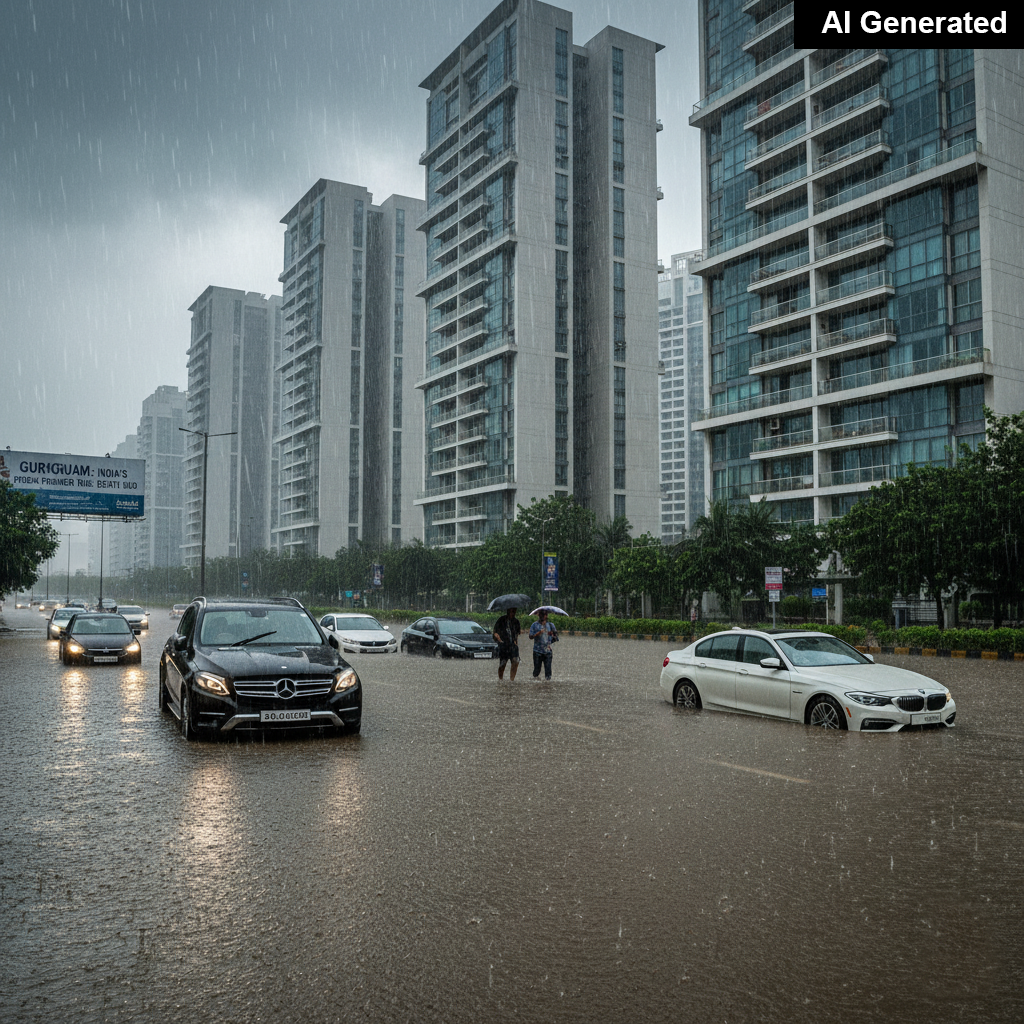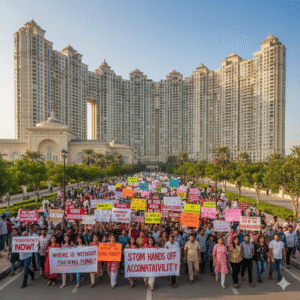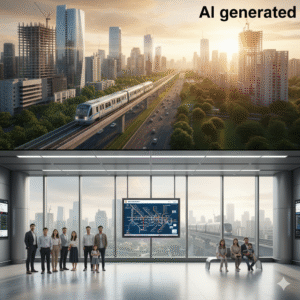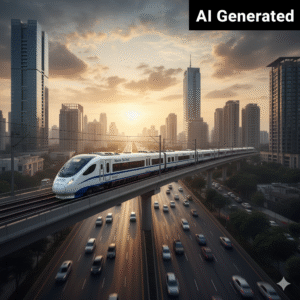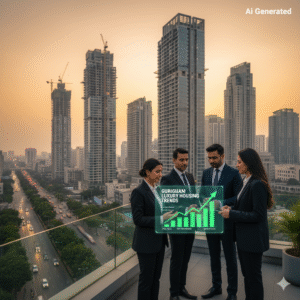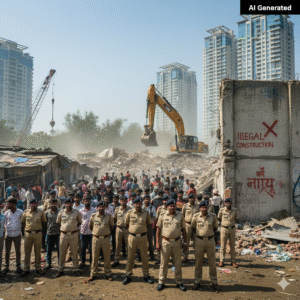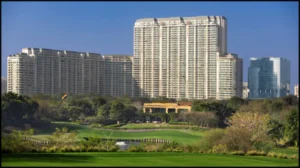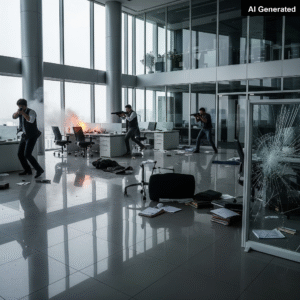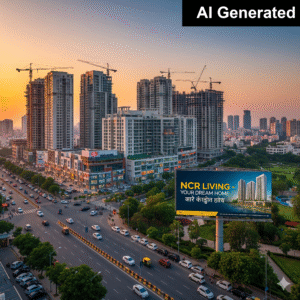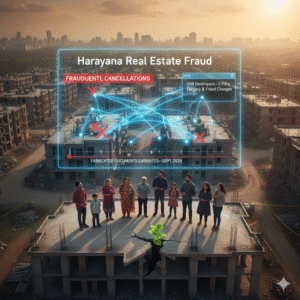Gurugram, a city known for its glittering skyscrapers and multinational corporations, has built a reputation as India’s premier real estate hub. Its luxury residential complexes and high-end commercial spaces attract top talent and significant investment. But with the arrival of the monsoon season, this shiny facade often cracks. A recent four-hour downpour exposed the city’s deep-seated infrastructure flaws. This event brought traffic to a standstill and left residents grappling with widespread waterlogging. The chaos sparked outrage among citizens who feel they pay a high price—in taxes, rents, and property values—for a city that cannot handle a few hours of rain.
The stark contrast between the city’s luxurious image and its ground-level reality during the monsoon is a source of bitter irony. While plots in some areas can sell for more than ₹10 crore, the city’s infrastructure seems to be worse than that of a smaller, tier-2 town. This discrepancy raises serious questions for developers, investors, and urban planners. It also creates a significant trust deficit. The market promises a world-class lifestyle, yet delivers chaos with every rain shower. This situation presents a critical challenge for Gurugram’s future growth as a reliable real estate hub.
Exposing Flaws in a Premium Real Estate Hub
Social media became a platform for frustration. Photos and videos of submerged luxury cars and flooded streets went viral. Residents’ sarcastic comments, such as jokes about “annual houseboat rides,” highlighted their discontent. The recurring monsoon mess isn’t a new problem. Experts have identified its root causes as a combination of poor drainage systems, unplanned and rapid construction, and the failure of civic teams to respond effectively. These issues, experts argue, stem from a broader failure in urban planning and execution. The relentless pace of development has often ignored or destroyed the city’s natural drainage systems and water bodies. This has left the urban landscape vulnerable to flooding.
The city’s rapid expansion has not been matched by a similar investment in foundational civic infrastructure. Developers have focused on vertical growth, building towering apartments and office spaces. However, the horizontal infrastructure—roads, drains, and civic utilities—has not kept pace. This imbalance creates a fragile ecosystem. With every new construction project, more natural surfaces that would absorb rainwater are paved over. The existing drains, which were already insufficient, become overloaded. The result is a cycle of flooding that seems to worsen each year. This is a fundamental risk for a premium real estate hub. It threatens its long-term viability and attractiveness to both residents and businesses.
The crisis extends beyond mere inconvenience. For a city that houses thousands of professionals and serves as the regional hub for many multinational corporations, a complete paralysis of traffic and commerce due to rain is unacceptable. Businesses lose productivity. Employees face immense commute challenges. The city’s reputation as a reliable and efficient business destination is at stake. The economic repercussions of such events are significant. They impact property values and discourage potential investors who seek stability and resilience in their assets. Addressing these infrastructure woes is no longer a matter of civic convenience; it is an economic imperative. The city must prove it is a reliable real estate hub.
Solving these deep-seated problems requires a coordinated effort. It demands better long-term urban planning, stricter enforcement of building codes, and a massive upgrade of the city’s drainage network. Authorities must also hold developers accountable for the impact of their projects on the city’s infrastructure. The recent public outrage may be a catalyst for change. It is a clear signal that residents are no longer willing to accept these issues. For Gurugram to truly live up to its promise as a world-class city, its infrastructure must match its premium status. Only then can it secure its future as a sustainable and trusted real estate hub.
Source – HT

